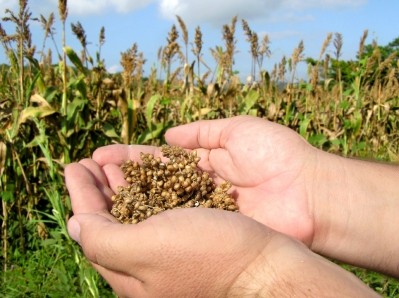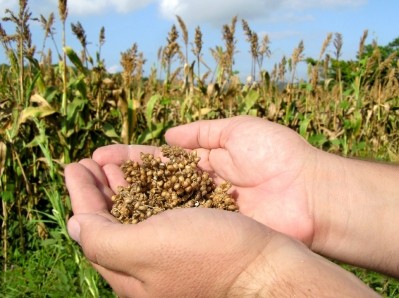Potential 2017 budget bounty (but also woes) for US feed sector

The National Grain and Feed Association (NGFA), National Sorghum Producers (NSP) and the American Soybean Association (ASA) have weighed in on the recently presented proposed budget. The document was offered by President Barak Obama and has yet to complete the approval process.
Officials with the ASA said they oppose the potential $18bn cut to crop insurance and were displeased by the level of funding for infrastructure.
But, there also were some positives, said Tim Lust, CEO of the NSP.
“Excluding the proposed cuts to crop insurance, which we oppose, the President’s budget does not unravel the Farm Bill,” he told FeedNavigator. “With the largest two-year drop in net farm income since the 1920s, our farmers continue to need the safety net created by the Farm Bill.”
However, all three groups praised the sections in the proposal covering funding for crop research and international trade.
Criticisms
The revisions to crop insurance look to promote production systems that would minimize climate change effects and limit some farming practices over erosion concerns, said officials with the Office of Management and Budget. “These include reducing the farmers’ subsidy by 10 percentage points for harvest price revenue coverage and reforming coverage for prevented planting,” they added.
The proposal is similar to one that was included in last year’s budget, but which was eventually struck, said Lust.
“The President’s continued attacks against crop insurance threaten a crucial element of the farm safety net,” he said. “This budget includes a 20% cut to crop insurance, the biggest portion of which comes from increasing premiums for farmers who purchase coverage with a harvest price option.”
The potential reductions come at a time when crop insurance is more important for farmers, he said.
“We strongly oppose the crop insurance cuts included in the President’s budget because they will harm sorghum farmers,” said Lust. “The savings achieved in the President’s budget by reducing protection under the harvest price option undermines the program’s viability and demonstrates a lack of understanding of the significant financial stress on farmers across the country.”
Officials with the NGFA and ASA had similar views.
“On the whole we’re very supportive of crop insurance, especially right now,” said Max Fisher, director of economics and governmental relations with the NGFA. “We’ll certainly be advocating for the harvest price option to stay.”
Although, he said, the organization is not opposed to the proposed reformation of preventive planting coverage.
The ASA added that they don’t support cuts to funding for the Army Corps of Engineers, as that group manages maintenance and construction products on US waterways, said Richard Wilkins, ASA president.
“ASA will continue to work with industry partners and Congress to build on the successful increases in investments achieved in FY16 Appropriations for our ports and waterways operations and maintenance and infrastructure improvements,” he said in a release.
Other budget details
However, some sections of the budget that found support from feed groups and growers.
Both the ASA and NSP spoke in favor of the funding covering programs like the Market Access Program (MAP) and Foreign Market Development Program (FMD).
“Exports are an important demand factor for sorghum farmers,” said Lust. “With more interest to US sorghum from an increasing number of world buyers, the MAP and FMD program are two proven tools to help US sorghum farmers compete in this international marketplace.”
The two programs have generated useful public-private partnerships, he said. “We appreciate the work of partners like the US Grains Council who leverage MAP and FMD funds to educate buyers around the world about the advantages and availability of US sorghum,” he added.
Research funding also was an area that saw support from several groups. The budget includes $700m, double the 2016 amount, in research funding for the Agriculture and Food Research Initiative and almost $1.2bn for work by the Agricultural Research Service (ARS).
“Sorghum growers rely on the continued improvement of sorghum genetics to further improve yields and quality while also adjusting to disease, insect and weather stresses,” said Lust. “We are encouraged by the President’s aspirational goal of $700 million in total funding for AFRI. Unfortunately, we recognize that the addition of $325 million in mandatory funds is unlikely to come to fruition.”







